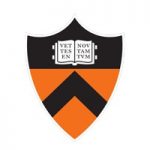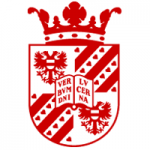项目介绍
COURSES:
The graduate program in Art and Archaeology is a five-year program. This five-year period is referred to as “regular enrollment.” Graduate study is carried out within one of seven broad fields: 1) Ancient, 2) Byzantine and Medieval, 3) Renaissance and Baroque, 4) Modern and Contemporary, 5) East Asian, 6) Islamic, and 7) African and African Diaspora.
Students in the Ancient field and the East Asian field will take a total of 15 courses. In the Ancient field, these 15 courses must include all Ancient art/archeology courses offered in four of the first five terms of a student’s enrollment. Some of these Ancient courses may be audited, with the approval of the student’s adviser. The 15 courses must also include: ART 502 (a no-credit course), ART 500, and one non-Western course. Those working in Greek and Roman fields will take both Greek and Roman History Proseminars (offered in Classics); and at least one 300-level literature course in Classics (i.e., a text-based course in either Greek or Latin literature).
All other students will normally take four full semesters of coursework totaling 12 courses. One half of all courses must be at the 400-level or higher. If a graduate student chooses to take a 200- or 300-level course within the department, the course will be designated as a graduate reading course (700-level), requiring additional graduate-level work. If a student chooses to take a 200-level course outside of the department, the student must show that they are performing at the graduate level. Students are expected to take courses with each faculty member within their particular field of specialization. Students in all fields are required to take ART 500. In their first two years in the program, all graduate students, in all areas of study, are required to register for and participate (*/No Credit) in the Graduate Seminar (ART 502). This will meet on the mornings following talks given by speakers in the department’s lecture series. These seminars will focus on topics (and/or readings) chosen by our invited lecturers. Attendance at both the lectures and the seminars is a requirement. Students are encouraged to consult with their advisers in selecting classes in other departments or at other institutions.LANGUAGE(S):
Students in all fields except ancient and East Asian must satisfy the department’s language requirements by passing a reading proficiency exam as soon as possible after enrolling, taking at least one exam early in their first term, and completing all language requirements before taking the general examination. The language requirements are two modern languages (excluding English) necessary for reading the secondary literature in the student’s subfield. These languages must be approved by the student’s adviser. It is also expected that graduate students will be competent in all languages necessary for their dissertation research. For this reason, it is typical that students will demonstrate competency in one or more languages beyond the two required languages. Students may take one of the language exams offered by the Department of German, the Department of French and Italian, and the Department of Spanish and Portuguese. The graduate coordinator will inform students when the language tests will be held. Those who fail a language exam in the fall may petition to take a comparable exam offered in the spring.
The successful completion of summer language courses taught on the Princeton campus will also count toward satisfying the language requirement. An examination from another institution does not fulfill the Princeton requirement.
Ancient
Modern Languages: Candidates for the Ph.D. in ancient art and archeology are required to demonstrate reading knowledge of German as well as another modern language appropriate to the student’s special field. Language examinations shall be arranged by the department, or may be satisfied, in certain instances, by coursework. As a general rule, elementary language courses will not count toward the 15 mandatory courses.
Ancient Languages: Students are expected to acquire proficiency in ancient languages. Those working in Egyptian are expected to have proficiency in Middle Egyptian, along with another area (i.e. Old or Late Egyptian, hieratic or Demotic) as it is relevant to their dissertation research. Those working in Greek or Roman art are required to pass sight exams in both Greek and Latin (administered by Classics) or to satisfy the proficiency requirement by coursework (a 300 level course).
East Asian
A candidate for the Ph.D. in Chinese art and archaeology is required to show proficiency in classical and modern Chinese, and a reading knowledge of Japanese. A candidate for the Ph.D. in Japanese art and archaeology is required to demonstrate proficiency in classical Japanese and/or kanbun, as appropriate to the candidate’s specialization, and modern Japanese, and a reading knowledge of Chinese or a European language.GENERAL EXAM:
The general examination is designed to ascertain a student’s general knowledge of the subject. Students in the Ancient and East Asian fields normally take the general examination at the end of the third year. Students in all other fields normally take the general examination at the end of the second or the beginning of the third year. Before scheduling of the examination may take place, students must have finalized all incomplete courses and language requirements.
Examinations are normally held during a stated 21-day period in September and October or in January, or during a five-week period in April and May. A student’s examination committee consists of three or more members, at least two of whom shall normally hold the rank of assistant professor or higher on the faculty of Princeton University. Any external examiners must be of comparable standing in the scholarly community. Examination committees in Ancient, East Asian, and African normally include faculty from other departments. For all others, examination committees are normally composed of departmental faculty members. For additional descriptions of the general examination in the Ancient and East Asian fields, see below. For all others, the general examination consists of one six-hour written and a two- to three-hour oral sessions. If a student fails the general examination, they may be recommended to stand for re-examination within a year. If unsuccessful the second time, degree candidacy automatically terminates.
Ancient
Typically, students in the Ancient field spend the first two and a half years in coursework. General exams are taken in the latter half of the third year. The general examination tests the candidate by means of an eight-hour written exam in Ancient art and archeology, and a four-hour written exam devoted to the general area of the dissertation. These are followed by a two-hour oral examination covering materials related to both written exams.
East Asian
The general examination, which normally takes place no later than May of the third year, is designed to test the candidate’s ability to integrate general, topical, and area knowledge in related fields chosen from Art and Archaeology and East Asian Studies. It consists of a first-day examination in the general field of Chinese and Japanese art history and archaeology, with approximately six hours of writing in response to questions submitted by Department of Art and Archaeology faculty; a second-day examination in the field of the student’s dissertation, with questions and length to be determined by the student’s principal adviser; and a third-day examination in a related area of East Asian Studies given by a faculty member in East Asian Studies with whom the student has studied, with the faculty member determining the questions and length.QUALIFYING FOR THE M.A.:
The Master of Arts (M.A.) degree is normally an incidental degree on the way to full Ph.D. candidacy and is earned after a student successfully completes all course and language requirements, and passes a portion of the general examination: for students in Western art and African art, the written portion of generals; for East Asian art, the general and East Asian studies fields; and for classical archaeology, the eight-hour written general field. It may also be awarded to students who, for various reasons, leave the Ph.D. program, provided that these requirements have been met.TEACHING:
Teaching is viewed as an integral part of a distinguished graduate program, and students are encouraged to acquire teaching experience as teaching assistants. Students in their first year of graduate work, however, are not ordinarily allowed to teach by the Graduate School. Students who are approved by the department chair and the director of graduate studies to precept prior to the general examination are offered a one-time reduction in their course load equivalent to one seminar.DISSERTATION AND FPO:
The Ph.D. is awarded after the candidate’s doctoral dissertation has been accepted and the final public oral examination sustained.
联系方式
电话: 609-258-3000相关项目推荐
KD博士实时收录全球顶尖院校的博士项目,总有一个项目等着你!





